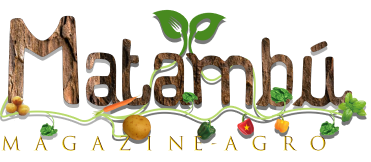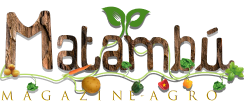[ad_1]
The demand for red cattle has all the time been high in South Africa. To enter this market and supply breeders another to the normal choices, the Du Plessis household, who owns the Brandwater farming enterprise, managed to set up one of many nation’s most profitable Droughtmaster studs. Chris du Plessis spoke to Denene Erasmus.
Photo: Supplied by Brandwater Droughtmasters
Brandwater is a household farming enterprise primarily based within the Free State. The enterprise is headed by third-generation farmer Linde du Plessis, who has been farming within the Fouriesburg area for greater than 40 years.
He was joined on the farm in 2003 by his son Chris. His different son, Koos, joined the enterprise in 2008, and the group was full when Linde’s son-in-law Francois Hamman, who’s married to his daughter Adele, joined them a few years in the past.
The Brandwater farming enterprise is properly diversified and contains livestock, crops and apples.
The enterprise is operated from properties round Fouriesburg, Clarens and Bethlehem within the Free State. The cattle element, which features a Brahman and Droughmaster stud, in addition to a Merino sheep stud, is predominantly primarily based within the Fouriesburg area. The enterprise’s business livestock department produces weaners for the weaner and feedlot markets.
From time to time, additionally they use among the maize they produce to spherical off cattle for slaughter on the farm. The crop element contains sugar beans, maize and wheat.
The livestock farm is located in a sourveld area, and it experiences very chilly winters with evening temperatures dropping to -12°C, and averaging -6°C.
Even in summer season, the nights are chilly with temperatures dropping to round 6°C in a single day. Daytime temperatures are delicate, rising to a most of about 15°C in winter and 28°C in summer season.
“It is a tough environment for the livestock to live in and grow,” says Chris du Plessis.
Grazing administration
The space experiences high rainfall of round 650mm per 12 months, and the sourveld grazing consists of grasses comparable to red grass (Themeda triandra). As such, the veld is just palatable through the summer season rising season.
During winter, the protein content material and digestibility of the veld decreases.
“The cattle can graze on the veld from when the first summer rain starts falling around September, until we start getting the first winter frost in March or April,” says Du Plessis.
During summer season, the veld has a carrying capability of roughly 1 LSU/4ha. To get the animals via winter, planted Eragrostis pastures are lower twice or 3 times throughout a season to produce hay.
The animals additionally graze on maize stubble throughout winter.
To complement their diet, cows within the business herd who’ve already calved are given a protein lick throughout winter, whereas people who haven’t but calved are given a upkeep lick.
Cows within the stud are given a protein lick from March till the veld has totally recovered in summer season to be certain that they don’t lose situation. All the cattle are given a phosphate lick in summer season.
Cows with calves and younger bulls are stored on planted ryegrass pastures which can be grown below centre pivot irrigation. Bulls are rounded off from three months earlier than public sale.
Seeing red
The Du Plessis household has lengthy been recognized for their White Manso Brandwater Brahmans, however once they determined to additional diversify the enterprise’s cattle element, they began wanting for a red, beef cattle breed with good meat qualities, which was tame and didn’t have calving and milk manufacturing difficulties.
“Red-coloured cattle are highly regarded in South Africa and historically this phase of the market has been dominated by just a few breeds such because the Bonsmara.
“We wanted to bring a red breed with a smooth coat to market, which was why we started focusing on Bos indicus-type Droughtmasters,” says Du Plessis.
They purchased their first Droughtmaster cows in 2012, and utilizing genetics that represented the kind of cow they had been aiming to breed together with in vitro fertilisation (IVF) and embryo flushing, they had been ready to pace up genetic enchancment within the herd.
“Ultimately, we purpose to breed an animal that carries loads of meat and that has a brief, straight and slick coat. We additionally choose strongly for animals with good temperament.
“Bulls must have strong, masculine heads and well-formed reproductive organs, including the scrotum and the sheath,” explains Du Plessis.
Breeding and choice
The bulls endure a number of rounds of choice, together with at weaning, at one 12 months outdated, at two years outdated, after which once more within the months operating up to public sale.
Du Plessis says they appear for animals which can be properly tailored to the robust setting the place they farm and received’t trigger them any bother.
“If an animal can adapt to the conditions in the area where we farm, it will be able to adapt anywhere.”
Selection of feminine animals is strict, however barely much less rigorous than that of bulls. At weaning, these with apparent and severe faults are culled from the herd and subsequent choice is principally primarily based on the kind of calf the animal produces and the way she raises that calf.
Heifers are bred for the primary time at 14 months and all feminine animals are anticipated to wean a calf weighing 50% or extra of her physique weight with out having obtained any supplementary feeding.
“We are still building our herd, so we are not chasing a specific replacement rate for cows at the moment. We also want to breed our own animals, instead of relying too much on buying in more animals.”
Some of the genetics at the moment getting used within the herd originated from Australia, however Du Plessis says their goal is to breed a Droughtmaster that’s distinctive and properly suited to South Africa.
Their herd at the moment consists of about 200 feminine animals, and so they have 50 to 60 bulls that also have to be marketed.
“A Droughtmaster bull can comfortably service about 30 female animals, but we maintain a bull-to-cow ratio of 1:25 for older bulls and 1:15 for young bulls.”
He says that is primarily as a result of they practise selective breeding through which sure bulls are mated with sure feminine animals. During every breeding season, roughly 50% of calves born are from the IVF programme for which they choose solely the highest eight to 10 feminine animals. They additionally make use of pure breeding and of synthetic insemination (AI).
The feminine animals that endure AI are put with bulls for one or two cycles to service any that failed to conceive throughout AI. The herd has a mean conception price of about 90%, and a weaning price of 85%. The inter-calving interval for the herd is between 340 and 450 days.
The common birthweight for calves is between 28kg and 34kg, and the weaning weight (at six-and-a-half months outdated) is between 240kg and 280kg.
Commercial crossbreeding
Du Plessis says they’ve had nice success utilizing Droughtmasters of their business herd in three-way crosses between Brahmans, Simmentalers and Droughtmasters.
“We run our commercial cattle under very extensive conditions and for that reason they need to be extremely hardened, which is why we decided to include Droughtmaster genetics.”
According to him, their use of Droughtmasters in business crossbreeding programmes has confirmed that the breed has sturdy prepotency, which ends up in calves with a high stage of uniformity in look and conformation. Calves produced when utilizing Droughtmasters within the three-way crossbreeding programmes don’t wrestle to obtain good weaning weights, he says.
“We really enjoy farming Droughtmasters; they don’t have any frills and they give us no trouble.”
They have seen the demand for Droughtmaster bulls amongst business breeders enhance quickly over the previous few years, and have already got a lot of returning shoppers who’ve been impressed with the worth that the breed provides to business breeding operations. However, Du Plessis says, whereas demand is powerful, they don’t seem to be speeding to chase increased numbers; they’re as an alternative maintaining a gentle give attention to advertising top-quality animals.
“We want to know that the bulls we take to auction have been strictly selected, that they will add value for the buyer, and that the buyer will come back to us to purchase more bulls.”
Phone Chris du Plessis on 083 687 3012, or Linde du Plessis on 083 700 8592.
Visit the Africa Droughtmaster Cattle Breeders’ Society at droughtmasterafrica.co.za.
[ad_2]
Source link










